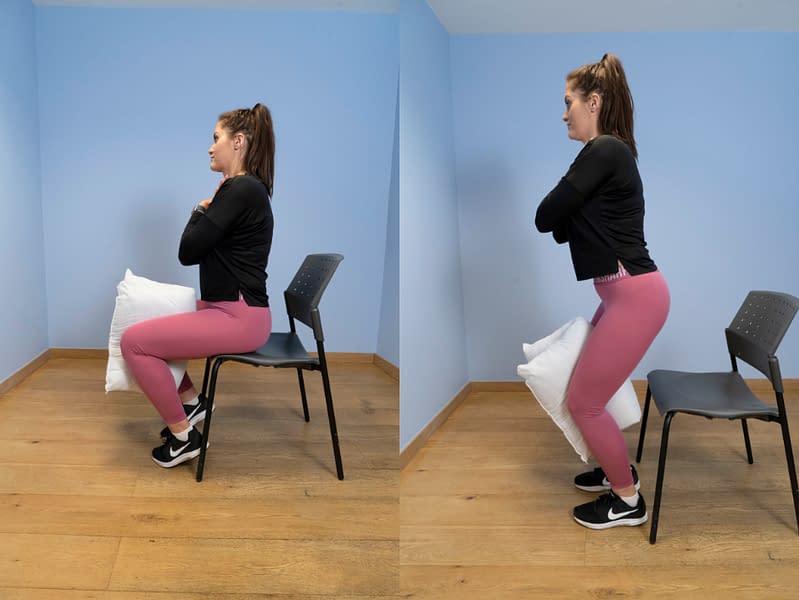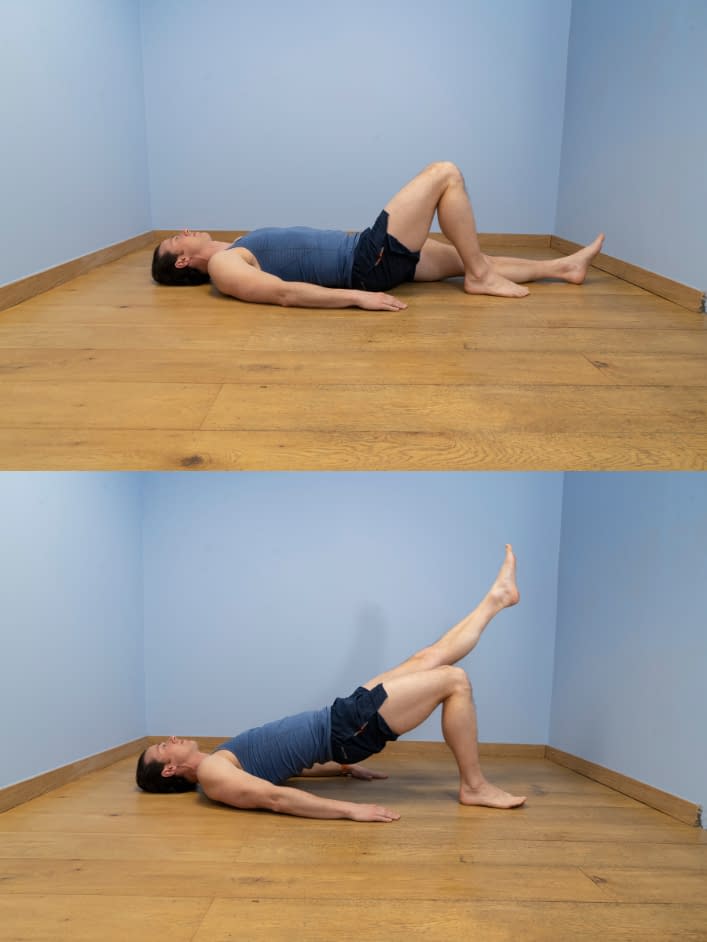Femoroacetabular Impingement Intermediate Exercise Programme
Aim to perform this programme a minimum of once per day unless prescribed otherwise. As with any new exercise, start slowly (repetitions as able) and build up as you are able within the guidelines below.
Pain should not exceed 3/10 whilst completing this exercise programme.
1. Piriformis stretch in sitting
- Start in sitting on a kitchen chair (not too soft).
- Bring the left foot onto the top of the right knee.
- Now gently apply some downward pressure to the left knee.
- Once you have done this slowly lean forwards until you feel a stretch in the bum muscle on the left side.
- Repeat on the other leg.
2. Sit to stand with pillow between the knees
- Sit in a stable chair that is at a convenient height for you to rise from.
- Shuffle forward in the chair so that your feet are directly under your knees and place a pillow between your knees.
- In a controlled manner, initiate a standing motion by shifting your weight forward and pushing down through your feet – hold a gentle pressure on the pillow throughout by pressing the knees inwards.
- As you rise, transition to standing upright by pushing your hips forward.
- Then, slowly lower yourself back down towards the chair by pushing your hips backwards and controlling the movement using your thigh muscles.
- Gently touch your buttocks on the chair’s surface and repeat.
3. Single leg hip bridge
- Lie on your back on the floor or bed with your knees bent at 90 degrees and your feet on the floor and your arms down by your side.
- Whilst keeping the knees in line with the foot and hip, kick the resting leg out straight so that it is off the floor.
- Push your heels down into the floor to gently lift your hips upwards. Lift as high as you feel comfortable but no higher than a straight line between hips, knees and shoulders – aim to keep the pelvis level throughout.
- Once your hips form a straight line with the shoulders and knees, hold for 5 seconds before slowly lowering your hips back down.
We recommend consulting a musculoskeletal physiotherapist to ensure exercises are best suited to your recovery. If you are carrying out an exercise regime without consulting a healthcare professional, you do so at your own risk. If you have any concerns whilst completing these exercises, please contact a healthcare professional.
More Plans
This programme focuses on strengthening muscles around the hip joint and aiming to increase the flexibility of muscles that may have become tighter due to pain. It must be understood that whilst pain during and after these exercises cannot be totally avoided, a significant increase in pain is not desirable. Pain should not exceed 3/10 on your self-perceived pain scale whilst completing this exercise programme.
- 0
- 1
- 2
- 3
- 4
- 5
- 6
- 7
- 8
- 910
This programme is a further progression with a focus on return to sporting activities and dynamic loading to ensure that your hip can tolerate the fast, high load activities required in your sport without an increase in symptoms. Pain should not exceed 3/10 on your pain scale.
- 0
- 1
- 2
- 3
- 4
- 5
- 6
- 7
- 8
- 910


